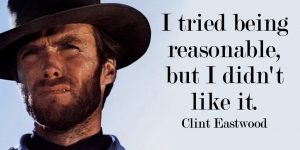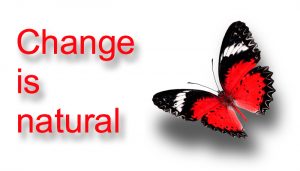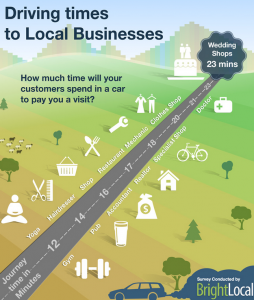Columnist Marcus Miller discusses how offline marketing strategies can be used to influence and improve local business’ digital marketing efforts.

I run a small digital marketing agency in the UK, and we have a strong focus on search in all its paid, organic and local formats. Over the years, we’ve come across all manner of clients. All shapes and sizes. Local businesses. National businesses. E-commerce businesses. Online and offline (or “bricks and clicks,” as we like to call it).
With so many clients over more than 15 years, we noticed that the majority of businesses are laser-focused on search and digital, while others have concentrated predominantly on offline marketing activities. These are two sides of the same coin, and as I discussed in my SEO Beyond the Browser column, both can contribute to a successful marketing campaign.
This month, I want to follow on from my previous post and take a look at printed media in particular and how the use of smart print can bring additional success to your SEO, Local SEO and digital marketing campaigns.
Merging print & digital
My agency, Bowler Hat, partners with a local printing company called Print Print. Together, we look at ways in which we can create smart campaigns that merge print and digital. This is something of a USP for both of us in our respective segments; our partnership means we can both offer a service that goes beyond the narrow approach of competitors in both of our marketplaces.
We take the approach of looking at how we can improve the physical and digital awareness of the client’s business and how the two intersect. We want to use print to:
- drive customers to the digital presence;
- connect the dots between the physical and digital presence;
- get users conducting brand searches and interacting with a site to enable us to personalize marketing;
- convince people to sign up to email lists; and
- build remarketing lists.
The options and implications are many. Just last month, the Moz Whiteboard Friday talked of how simply influencing branded searches can provide SEO benefits, so anything you can do here from a branding perspective will help round out your offline and online marketing strategy.
The video is an interesting watch, and if you have never come across concepts such as co-occurrence of keywords and entity relationships, then I recommend you check out that video. Some of it is theoretical, but it is often backed up by patents, and there is a good dose of common sense here — which is never a bad thing in the often wacky world of SEO.
The following are some examples, provided by my friends at Print Print, where printed media has been used to drive engagement with the digital components of the business.
Example #1: InductaFlex
Wherever the InductaFlex trade stand is in the world, it is always busy. Despite being well-staffed, the team often struggles to speak to all the interested visitors eagerly waiting for their turn. This leads to a loss of opportunities — and maybe not a great first moment of truth.
To trial a new idea, they set aside one member of the team that would speak to people on an appointment basis, allowing visitors to book time slots rather than waiting around.
The time slots were only promoted on the stand itself specifically to alleviate pressure during the event. Cards were printed with QR codes directing people straight to a dedicated web page on the company site for the show. Here, visitors could book a time slot and take a virtual tour of the stand, selecting individual elements on display and watching video guides on the products.
This had a dramatic impact on the event, reducing the number of people crowding the stand and spreading out the visitors through the day. A significant number of follow-up meetings were requested through the website, as visitors found the initial answers they needed through the virtual tour without booking an appointment.
A secondary benefit was that this also served to connect these users with the digital brand components and to drive lead generation through the booking system — a win-win.
Example #2: Diffusion
Looking for fashionistas to join their team, Diffusion created displays that were placed in their own stores and in local colleges and university student services, with leaflets providing instructions on how to apply for their vacancies.
The process directed candidates first to their Instagram pages, where they had to select a total of five items to make up an outfit. With screen-grabs taken, candidates then went to the application page on the website, uploaded the photos and described where they would go and what they would do while wearing the outfit.
The process allowed Diffusion to get a feel for the individual style and personality of the candidates, and applications increased five-fold compared with previous recruitment campaigns.
The company also saw a significant increase in followers on Instagram, far above the applications received as a result of the advertising element of the campaign and the locations it was promoted in.
Improved engagement with the brand, more social followers and hugely beneficial customer insights — all of which can only serve to improve visibility of the business in search as brand signals grow. Another happy customer.
Example #3: Allfresch
To promote their ethically responsible supply chains, Allfresch created an interactive journey map on their website that detailed the elements of their supply chain. This was printed in their trade show brochure using augmented reality to drive traffic to their website.
They were able to demonstrate their ethical credentials with a highly effective and user-friendly service that included downloadable PDFs for businesses to refer to in their own supply chain reports.
Analytics demonstrated the increased traffic that continued through the company website, checking out further details on the company history and services.
More traffic. Improved engagement. More branded search and a continued improvement in traffic from organic search long after the trade show.
Common-sense marketing
I am a big believer in trying to explain marketing and SEO in common-sense terms. There is a benefit for SEO consultants to dive into the intricacies of the algorithm, but for the average business, there is more to gain by focusing on what Google is trying to do rather than obsessing over how they do it (and looking for cracks to exploit).
It also follows that there are some common sense elements in combining online and offline marketing:
- Brand search. If people are actively looking for you, it helps send a signal that you are popular.
- Brand-plus search. If people search for your business name (Bowler Hat) and your main service area (SEO), then it indicates an association between the two.
- Search autosuggest. Branded search can influence search autosuggest. For example, if someone searches for “SEO Birmingham” and “SEO Birmingham Bowler Hat” comes up in the autosuggestions, it helps raise awareness and drive people towards your business.
- Personalized search. If a user searches for your business name and service area and then engages with your site, there is a chance they will see you higher in the search results for subsequent related queries. We have seen this take businesses from page two and beyond to the top three organic results, so this is a powerful shortcut to improved rankings that only works with strategies that influence branded search.
- Related search. The related search options at the bottom of the page can also be influenced. This provides yet another branding and awareness tactic that you can help influence through offline (and online) strategies.

Ultimately, anything you can do to drive users to a search engine to look for you is only going to help build positive signals around your business, and that will help in your search engine optimization efforts. Google just wants to deliver quality, relevant results — and as SEOs, we just want to help them do that job!
Putting this into practice
The following are some simple strategies you can use to combine online and offline advertising:
- Business cards. Don’t just print your website address — direct users towards something they can search for, a QR code and so on. Gamify getting folks from your business card to your website.
- Flyers. Create a competition that asks people to Google your brand name and service (“bobs printers”) to find an answer (and influence search suggest).
- Brochures. Include short links to digital assets to drive people to the website to get more details.
- Signs. Feature website CTAs or terms that customers should search for. Do this on your storefront and with any basic offline advertising you do.
- Reviews. Mention your positive reviews on print media and direct folks to search for them.
- Sales letters. Use these as the marketing stimulus, or first step in a sales funnel. Direct people to search for you or to a page on your website.
- Yellow pages. Yep, they are dying a slow, protracted death, but in some industries, they can still have a place (for now, at least). If you do use this strategy, absolutely, positively connect this to your digital presence by directing folks to search or visit your website.
The only limit here is your imagination: newspapers, magazines, TV, radio, envelopes, direct mail, podcasts — the list goes on and on. Whatever you do, though, ensure you connect the dots between your physical and digital marketing efforts.
Be a mixed media guerrilla marketer!
Much of this kind of marketing is built upon guerrilla marketing principles — low-cost, unconventional marketing tactics. Dare to be different and play the game in ways your competitors have not even considered. Think digital. Look at print. Look at offline. Consider how you can use physical marketing to drive website visits and brand interest.
Bring research, strategy and planning into your marketing. Plan your campaigns like the great strategist Sun Tzu.
Whatever you do, just don’t play the game on the same level as your competitors. Weave your digital and physical marketing together, and the results will be greater than the sum of their parts.
[Article on Search Engine Land.]
Some opinions expressed in this article may be those of a guest author and not necessarily Marketing Land. Staff authors are listed here.
(Some images used under license from Shutterstock.com.)
Marketing Land – Internet Marketing News, Strategies & Tips
(73)
Report Post






